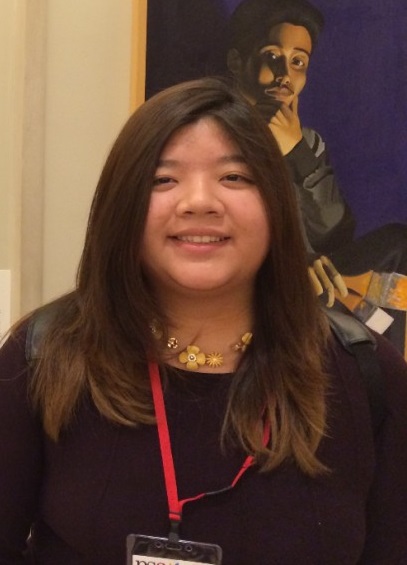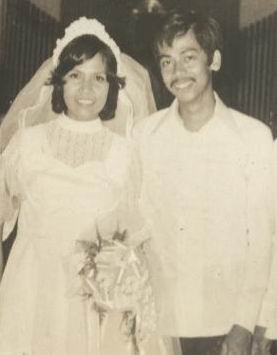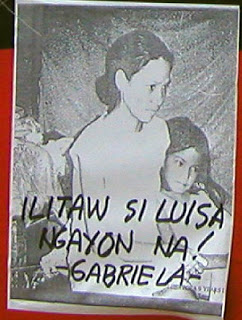Another forlorn wedding anniversary awaits a ‘desaparecido’ and the husband who keeps fighting to find her
By Julia Carreon-LagocMarch 28, 1977 was not a day that stood out among the rest of the days in March ’77 in the Philippines.
In Iloilo, it was a humdrum, typical day of weeks, months, and years, especially at the Fort San Pedro stockade. The day of days here was when a detainee would be issued a release paper. When might that be was the big question for the activists herded by the strong arm of Ferdinand Marcos’ Martial Law.
Beneath the gloom, March 28, 1977 was eventful for Ma. Luisa Posa and Tomas Dominado. It was their wedding day!
A church wedding was the idea of the groom’s uncle and aunt, then National Irrigation Administration-Western Visayas Director Manuel Ticao and wife Fe Legislador. (Tom’s parents had already passed away.) The consent of Luing’s family, the Posa-Arches of Pototan, came in swiftly. The Iloilo provincial commander of the Philippine Constabulary at the time, was prevailed upon to grant a pass to Tom and Luing for their church wedding, on the belief that marital bliss would usher in a normal life for them and they would give up their militant activism.
There was also the persuasive clincher for the pass: the colonel becoming the wedding sponsor! The groom’s deceased father, Atty. Dominado, was the dictator’s classmate in UP Law. Of course, Marcos could not be bothered by one obscure wedding of his enemies, whoever they were related to.
In the detention cell logbook, the day started with a pass for bride and groom at 9 a.m. and their return at 4 p.m. Four constabulary troops acted as escorts while many other plainclothesmen were posted—in and around the church as well as at the reception venue. They started the day as separated detainees and ended the day together at the women’s section of the Western Visayas Rehabilitation Center.
The groom had gotten a decent haircut and a customary barong. The bride wore finery made from the old bridal gowns of her sisters. The church ceremony went through smoothly, the couple having no hand at all in the preparations except for the choice of the church of their younger days—Santa Teresita Parish.
Father Nabor, a classmate of a relative, had to be brought in from Aklan as officiating priest. Confession was obligatory prior to marriage. He was taken aback when the couple chose to make their confession together, sharing their thoughts of their individual wrongdoings based on the church’s litany of sins. Surprisingly, they could not think of one mortal sin and only some venial ones committed in the recent past which they did not deign to bother the young priest of. It was more a moment of shared intimate thoughts with the newly acquainted priest on the reason why they were in jail which was “no sin at all.” The priest granted general absolution, perplexed as to the reason for the couple’s detention.
The sponsors and the crowd were more thrilled by the wedding than the couple who were quite uncomfortable—the wedding ceremony making them the center of attention. And then followed the unending photo sessions of relatives and friends with the principal characters. All the while, the plainclothesmen on guard were getting nervous. The over-eager crowd might distract them from their wards.
The reception was held in the Legislador patriarch’s residence in Oton, characterized by the overflow of food and drinks—one thing the Legisladors could not do without on special occasions. Even the nervous armed escorts let their guard down, helping themselves with the sumptuous food and drinks.
There were the usual rituals, followed by long moments of advice on family affairs and relationships from kith and kin who lacked the courage to visit the couple in the stockade. The ruthlessness of Martial Law terrified them.
Finally, after all the toasts and well-wishes and the heart-tugging goodbyes, the couple were unceremoniously brought back to reality—a honeymoon inside the women’s detention cell. This time, their love nest was on the second tier of a frail double-deck that wobbled in consonance with any slight movement. No better than an egg nest of robins swaying in the wind.
While it did not have the romantic glow of “Love Story,” Luing and Tom’s love life was exceptional, transcending the bounds of time, iron bars, and history.
Maria Luisa Posa was detained for a total of 10 years on charges of rebellion and murder. When she was finally released in 1991 with all charges against her dismissed, she went back to school to get a degree. She became the regional spokesperson of Samahan ng mga Ex-Detainees Laban sa Detensyon at Aresto, an organization of former political detainees. She was abducted with another activist Leonilo Arado in 2007 in Oton, Iloilo by armed men, according to published reports. Her husband Tomas and their two daughters, May Wan and Tamara, are unrelenting in their search while advocating for other ‘desaparecidos’ who remain missing under circumstances that violate human rights.
The author, Julia Carreon-Lagoc, is related to Tomas Legislador Dominado. The family believes that sharing the story of Luisa would “somehow assuage the grief” of her daughters.














